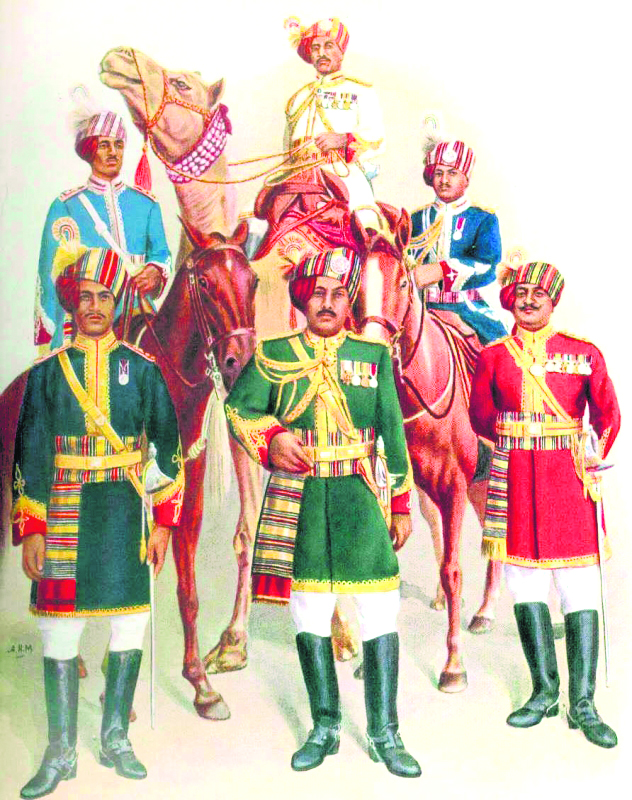Every year as the lunar month of Shravana welcomes its full moon (Shravana Purnima), India rises to celebrate the Hindu festival of Rakhi or Rakshabandhan. On this day, millions of sisters tie sacred threads or rakhis/kalawas to their brothers’ wrists while praying for their longevity and well-being. In return, they are granted presents that symbolise the eternal and unconditional vow of protection from their brothers.
Formally translating into the bond (bandhan) of protection (raksha) that is sanctified by a thread (rakhi), the festive bond prevails beyond ties of blood. In other words, rakhi exchanges on this day take place not only between siblings, cousins and distant relatives, but between any two people who share a similar camaraderie of love, trust and loyalty. Thus, it is not uncommon to find verbally proclaimed or muhbola bonds that are consecrated by a rakhi, and more importantly, it is this very nuance that distinguishes Rakshabandhan’s cultural symbolism.
This Rakshabandhan, I pay tribute to the various myths and legends associated with the origin of the custom. Despite being unique in their timelines of occurrence and the characters involved, their common context echoes in the joint validation they provide to humanistic bonds that transcend familial ties. Each one of these anecdotal references, regardless of how authentic or verifiable they seem, transmit the recurring triumph of the human spirit, when solicited by another in raw confidence. As one will come to experience through these countless tales (of which I very briefly narrate only four), each one of us is capable of upholding common humanistic values no matter how contrasting our origins, compositions and situations might be.
THE STORY OF RANI KARNAVATI
The most popular tale of referral in my side of the world revolves around Rani Karnavati, the widowed queen mother of Chittor whose kingdom was facing an aggressive advance by the then Sultan of Gujarat, Bahadur Shah. After shrewdly ascertaining that her vulnerable army stood little chance to prevail over Bahadur Shah’s offensive, she sent a rakhi to Mughal Emperor Humayun, who in turn honoured his newly established brotherly duties and arrived at Chittor’s rescue. Most contemporary historians flout this account for its lack of mention in historical records and even in Humayun’s personal annals. Irrespectively, the imaginative possibility of a Mughal Emperor coming to the rescue of a distant Rajput queen that he had probably never met is deeply moving.
DRAUPADI AND LORD KRISHNA
As per an episode in the Mahabharata epic, Lord Krishna’s restorative fight for Dharma against the demon King Shishupal caused him a bleeding wrist/finger. To prevent further bleeding, Draupadi tore off a piece of cloth from the edge of her sari and tied it around the wound. Feeling immensely overwhelmed by this gesture of hers, an emotional Lord Krishna vowed to protect her in any circumstance if and when the need arose. And evidently so, he miraculously intervened during Draupadi’s iconic disrobing or cheerharan by the Kauravas. No matter how many yards of Draupadi’s sari the licentious Dushasana unwrapped, her overlooking saviour, Lord Krishna ensured it never ran out, thereby protecting her honour and dignity in a courtroom filled with initially guffawing Kauravas who were left dumbstruck.
ROXANA AND RAJA PURU
This particular story dates back as early as 300 B.C., during Alexander’s many conquests in the western parts of the Indian subcontinent. A distinctly powerful defence was put up against the Macedonian forces by the Jhelum river in Multan by Raja Puru or King Porus of the Paurava dynasty. Raja Puru’s formidable elephant army amidst the torrential rain and slushy battle ground terrified Alexander’s men, and Alexander himself considered retreating back to Macedonia as per one version of the story. Just then, his wife Roxana intervened, approaching Raja Puru with the customary thread of Rakhi that she had been enlightened about during her Indian excursion. The following day, the Sun dawned upon extraordinary skies, with Raja Puru graciously accepting Roxana’s initiative and extending his cooperation to Alexander. Whether or not this was a reality, Plutarch’s accounts do confirm Alexander’s officiating of Raja Puru as a Hellenic Satrap and granting him land domination south of the river Hyphasis or Beas.
GODDESS LAKSHMI AND KING BALI
The Bhagvata and Vishnu Puranas recount demon King Bali’s insistence that the Lord Vishnu live in his palace after he won all three worlds from his demonic clenches. True to his word, Lord Vishnu agreed and began living in King Bali’s palace with his divine consort, Goddess Lakshmi. Unhappy with her Lord’s decision as well as his newly fostering friendship with the demon King, Goddess Lakshmi devised a plan of exit. She approached King Bali disguised as a Brahmin woman, seeking his protection until her husband returned. King Bali agreed to grant her his protection and welcomed her into his palace. Then, on the auspicious day of ShravanaPurnima, she tied the symbolic thread or rakhi around King Bali’s wrist, thereby deeply touching the demon king’s heart. Thrilled by the affection that he had received from his newly-found sister, King Bali asked for her to make any wish that her heart desired, which he would happily fulfil. Upon hearing this, Goddess Lakshmi revealed her true identity and earnestly pleaded with him to release Lord Vishnu from his palace, such that they could return back home to Vaikuntha. Disheartened, yet true to his word, Kind Bali relented and granted her wish, with the sole condition that she and Lord Vishnu visit him annually for a meal on this very day of ShravanPurnima.
Thus, these four compelling accounts from different mythical and historical contexts bear significance even today, for the essence of Rakshabandhan continues to thrive amongst us. The purity of loyal union, and its universal possibility even echoes in more recent historical accounts, most popularly during the British-led partition of Bengal in 1905. Back then, it was none other than Rabindranath Tagore who encouraged his fellow countrymen and women to observe a mass Rakshabandhan festival to instil feelings of love and togetherness between the Hindu and Muslim populations of Bengal as they stood upon the brink of separation. 116 years after, we celebrate 75 years of our country’s independence, while mourning the loss and displacement of millions of lives in the process. The universality of Rakshabandhan stands as strong as it did back then, and more still, for reasons that I hope we are able to recognise.













